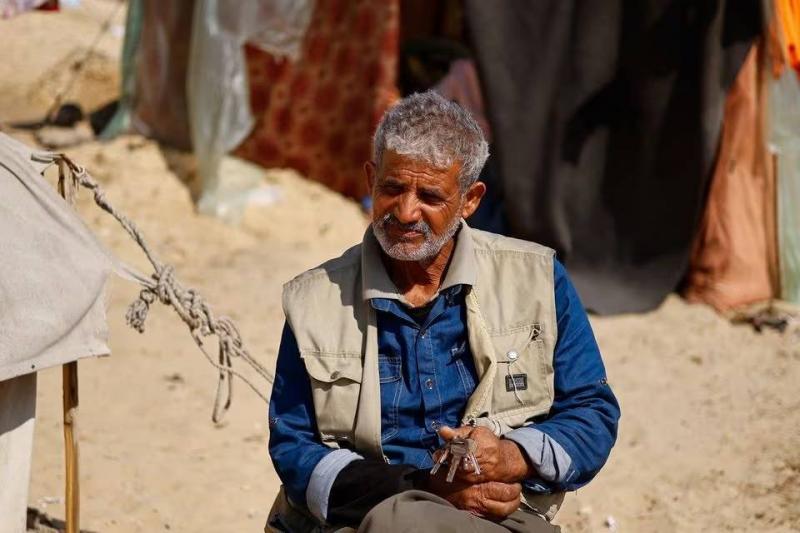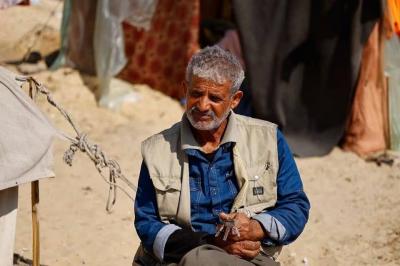Palestinians who have been displaced due to the Israeli attacks on the Gaza Strip keep the keys to their demolished or collapsed homes as symbols of their loss, a tradition rooted in history that traces back to the mass displacement of Palestinians in 1948. Most residents of Gaza are either refugees or descendants of refugees who fled or were expelled from their homes during the 1948 war, which accompanied the establishment of the State of Israel, known to Palestinians as the Nakba. The keys to homes lost in 1948 are passed down through generations in some refugee families, symbolizing what they consider their right to return, which represents one of the most contentious issues in the Israeli-Palestinian conflict.
Now, the keys of homes that were bombed in the war between Israel and the Palestinian Islamist movement Hamas since October have taken on symbolic meaning. Hatem Al-Farani, who sought refuge in a tent in Rafah, southern Gaza, with his family, stated, "History repeats itself. My grandfather carried the key and wanted to return, and today I carry the key (in hopes) that I will return to my apartment when it is back to normal, but God will compensate us." During a week-long ceasefire in November, Al-Farani received pictures of his family’s home, an apartment in an apartment building where he lived with his parents and siblings in the Jabalia camp in northern Gaza. The photos showed that the building had been destroyed.
Al-Farani continued, "Today I am 44 years old... I want to start my life anew and build a new house." The war began when militants from Hamas, which has controlled Gaza since 2007, attacked southern Israel on October 7. Israel claims this attack resulted in the death of 1,200 people and the capture of 253 hostages. Committed to eradicating Hamas, Israel responded with a ground and aerial attack on Gaza that, according to the health ministry in the enclave, has resulted in the deaths of over 30,000 people. The bombardment leveled many areas of the enclave and caused the displacement of the vast majority of its 2.3 million inhabitants, alongside widespread hunger and illness.
Symbol of Hope
Hussein Abu Amsha finds himself in a similar situation to Al-Farani. He and his family live in a tent in Rafah. During the ceasefire, he received a video recording showing his home in Beit Hanoun in northeastern Gaza after it had been bombed. He stood holding a key attached to a keychain made of currency inscribed with "Palestine," which he claims dates back to the British Mandate period before the establishment of Israel. He said, "The key means for all of us the homeland, and one without a homeland cannot live; there’s no other shelter left behind, and we hope to return, even if it’s just a tent over the house that used to be our homeland there."
Mohammed Al-Majdalawi, who was displaced from his home in the Beach camp in northern Gaza, recalls his grandfather showing him an old key and recounting memories from 1948. Now, he finds himself undergoing a similar experience. He said, "What did I do to Israel when you destroyed my house? While the children of the world live in luxury, our children live in humiliation and sit and die and get sick from the cold?"
For his part, Mohammed Said, the director of the media office of the committee managing the Qalandiya refugee camp between Jerusalem and Ramallah, indicated that "the key symbolizes the right of return, representing the refugees' insistence on the right to return to their homes from which they were displaced in 1948. The key has many significances; it’s not just a matter of a key, it’s a metal object that can be made anywhere. But once you hold on to that key, it means you have a dream you are striving to achieve."
In the West Bank, where refugee camps date back to 1948, giant keys can be seen in various places, forming part of the iconic representation of displacement that everyone there understands the meaning of.




